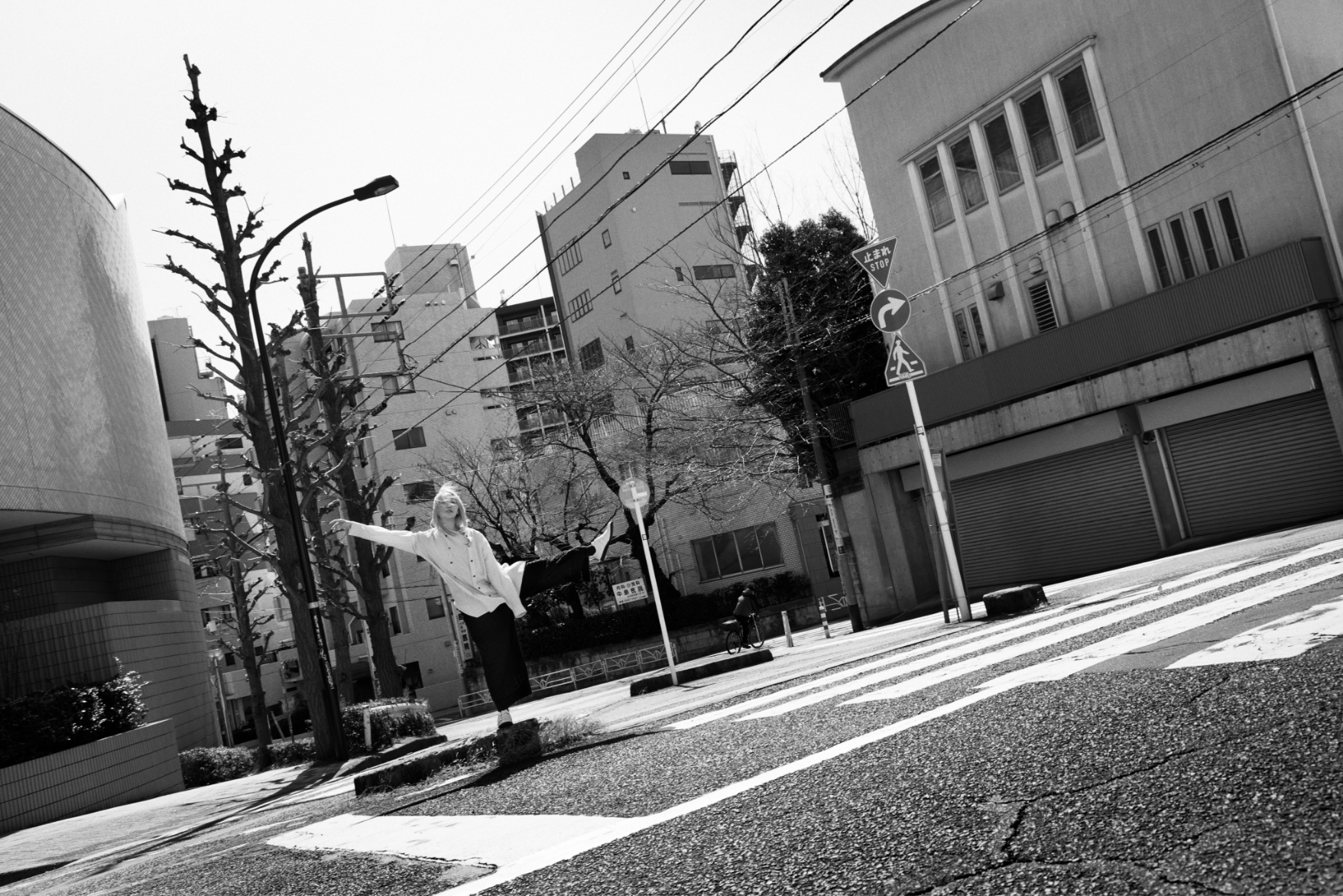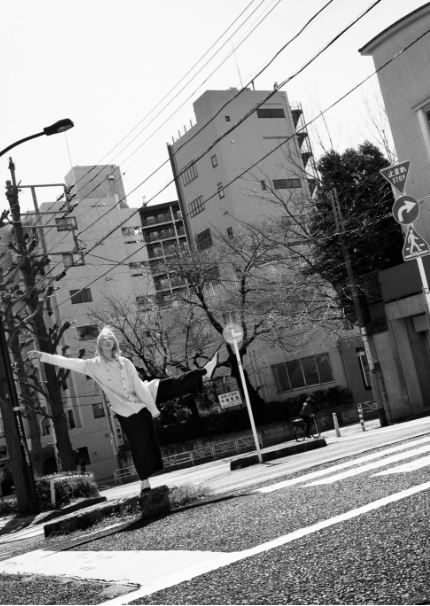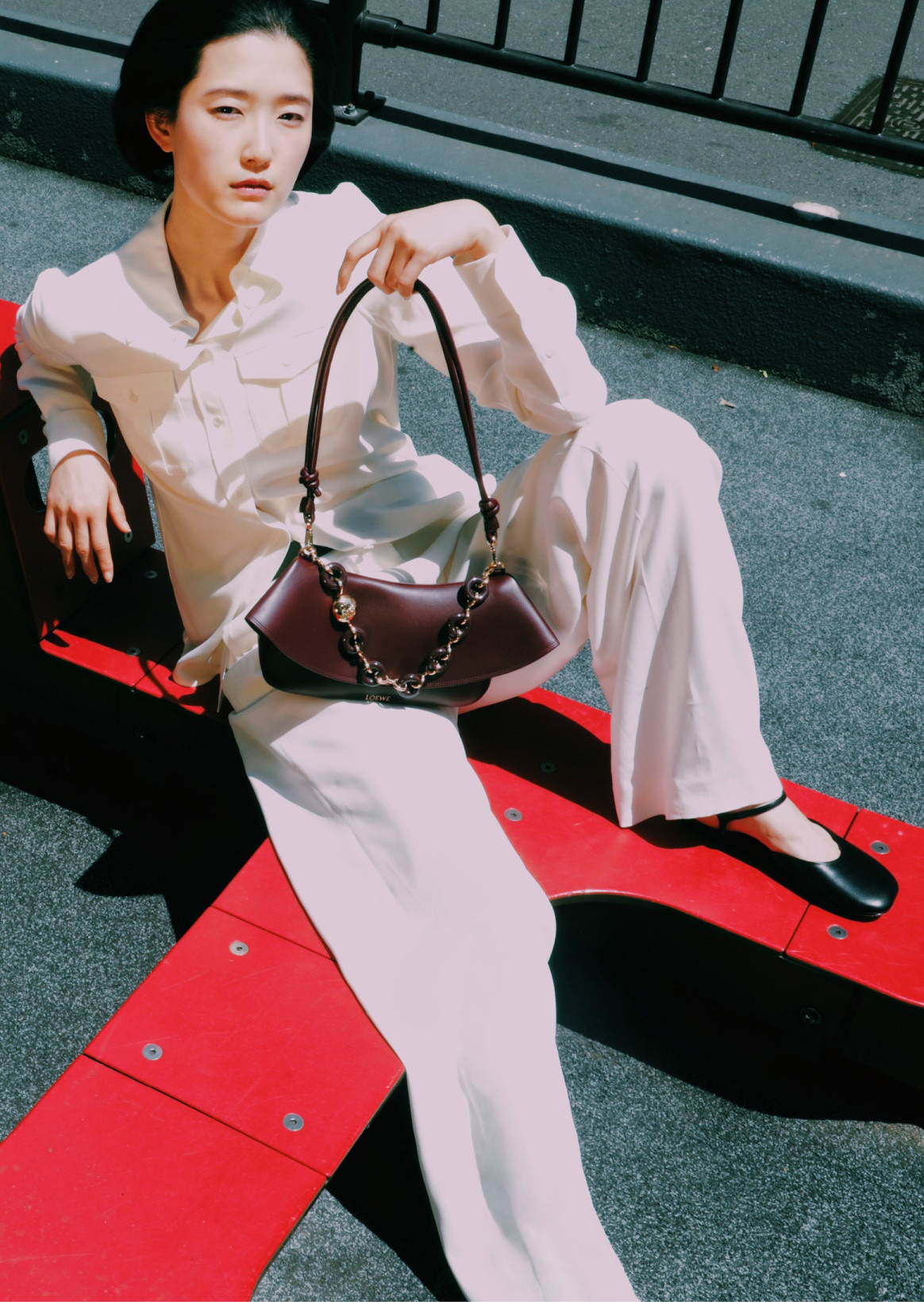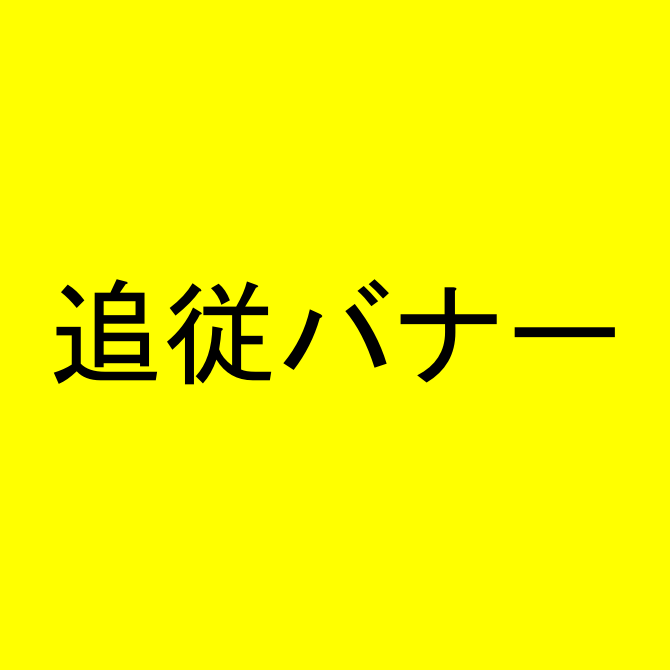- Photo
- Kazumi Kurigami
- Text
- Hirofumi Kurino
- Director
- Sato Takayoshi (OGYA inc)
- Stylist
- Keisuke Baba
- Model
- YACO, Jun Niioka(BARK IN STYLE)
在澀谷這個城市,匯集了繼承山本耀司思想的6個品牌。
Y’s、Y’s for men、discord Yohji Yamamoto、LIMI feu、Ground Y、S’YTE。
各自用不同的語言講述“YOSHIYAMATO DNA”,在澀谷PARCO這個領域形成了一種存在感。
傳說中的攝影家操上和美拍攝的是以街道為背景的衣服所醞釀出的寂靜和緊張感。
時尚與城市,人與時間交錯的瞬間,被他的目光深深烙印著。
栗野宏文從“城市·人·物”的視點,講述了風景背後的記憶和關係性。
這張照片和語言重疊的記錄,是衣服與城市結合時產生的一個“共犯關係”的證明。
Six brands inheriting the philosophy of Yohji Yamamoto are gathering in the city called Shibuya.
Y's, Y's for men, discord Yohji Yamamoto, LIMI feu, Ground Y, S'YTE.
Each expresses the "Yohji Yamamoto DNA" in a different language, together creating a singular presence within the space of Shibuya PARCO.
What legendary photographer Kazumi Kurigami captures is the quiet tension emanating from garments worn against the backdrop of the city. Moments where fashion and the city and where people and time intersect are deeply imprinted in memory through his gaze.
Hirofumi Kurino, meanwhile, speaks from the perspective of "city, people, and things" about the memories and relationships that lie behind those scenes.
This record, in which photographs and words overlap, stands as evidence of a certain "complicity" that arises when clothing connects with the city.
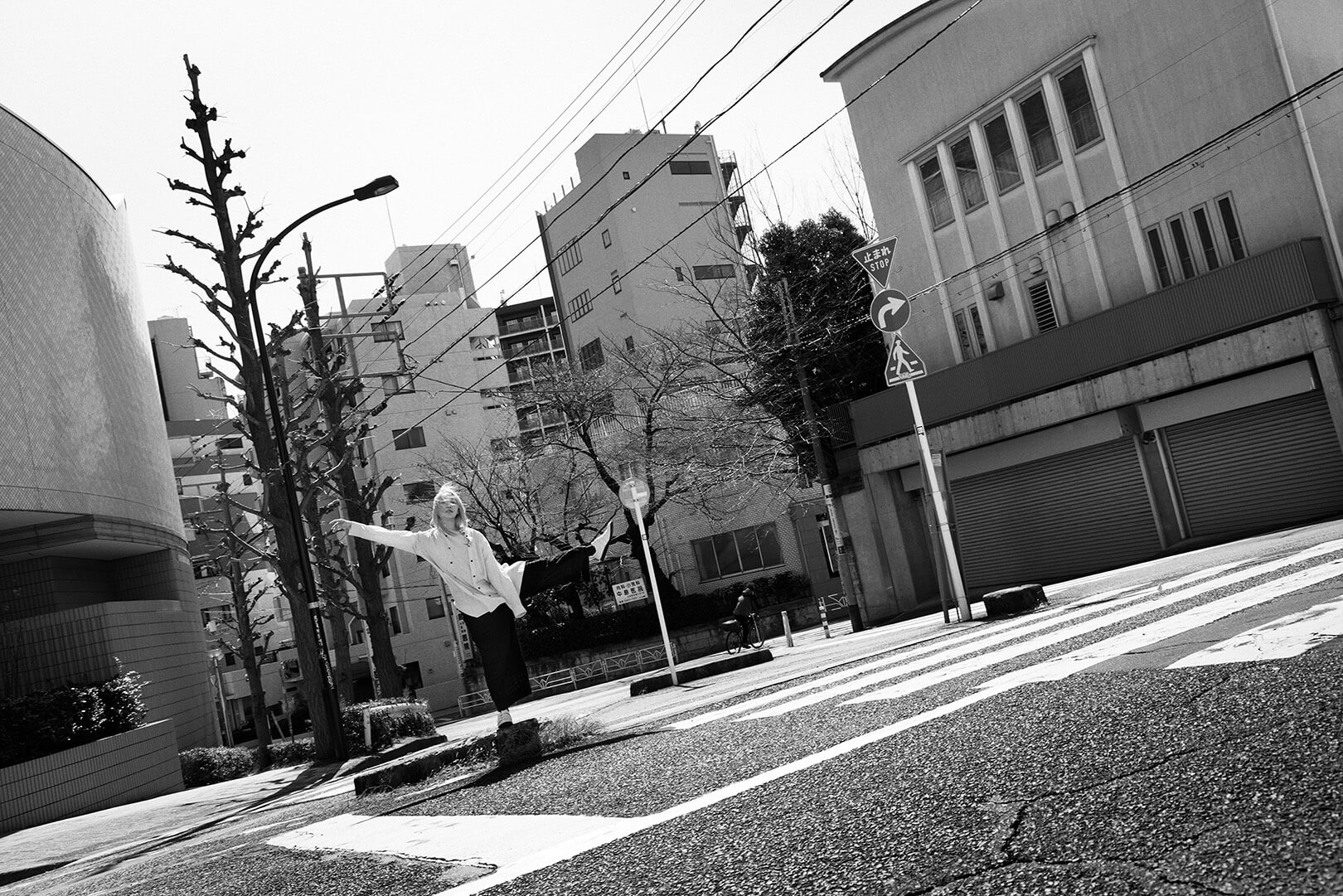 Y’s
Y’s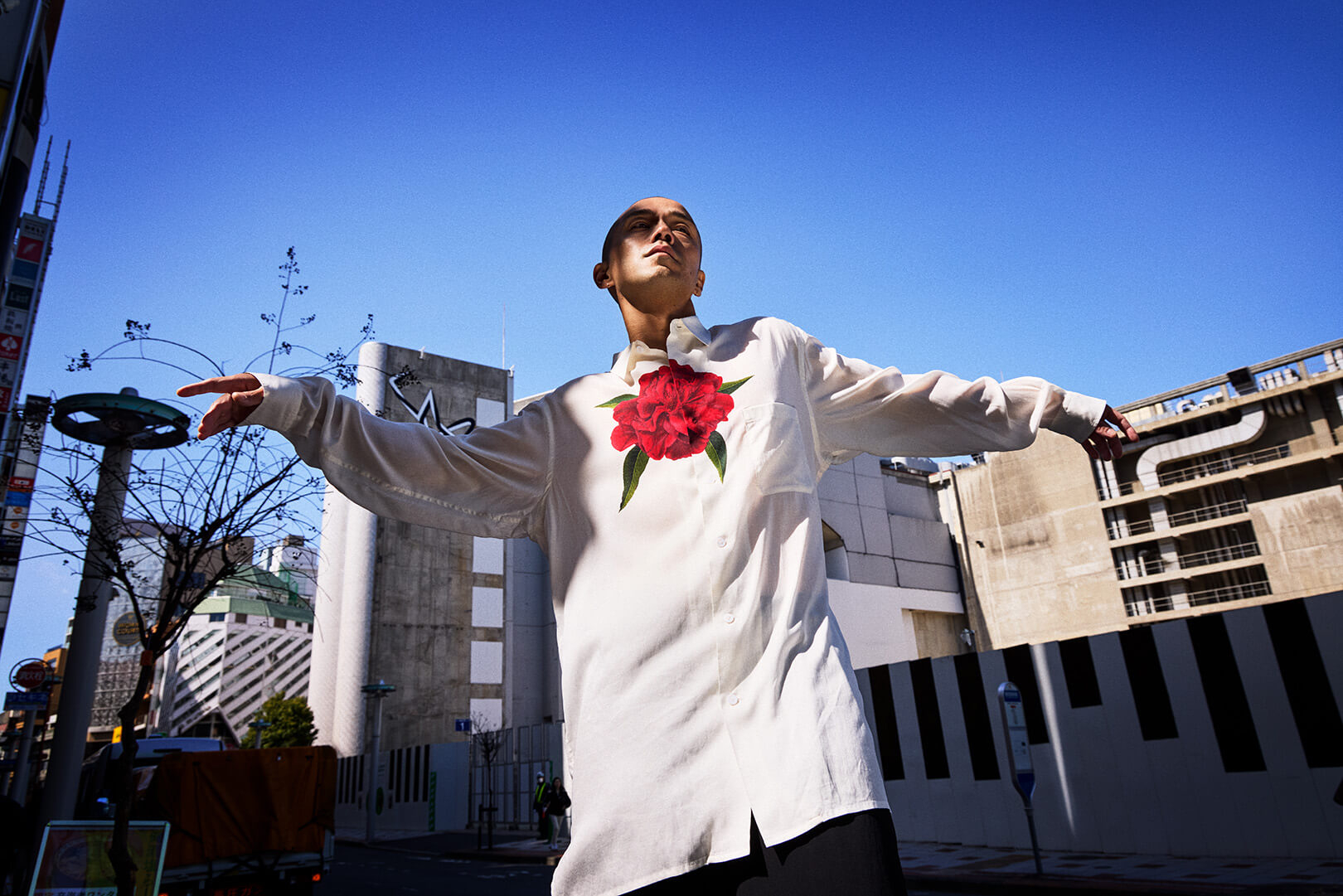 Y’s for men
Y’s for men人・町・物
城市由人來建造。
作為人們聚集、生活、交換事物和想法的場所,“城市”成立了。同時,也可以說“人”也是城市建設的吧。
至少可以說我(栗野宏文70代)是由城市培育出來的。
從個人的內容開始,並不是因為想談論個人史。但是,我相信說作為‘當事人’的經驗在這篇文章中是有效的。
原本我的母親(1927~2010)是在澀谷出生長大的。母親是喜歡電影的少女,似乎生活在“聽到開始的鈴聲響了之後離開家也趕上了上映”的區域。這樣的母親經常帶著國小生的我去電影院。我自然地學會了乘坐電車的方法和買電影票的方法,10代中期以後一個人開始去澀谷的名畫座。
我覺得入場費是300日圓。交通費是世田谷線,如果是兒童折扣的話,30日圓就可以從下高井到澀谷了。花了很多時間。
不久,我在音樂中醒來,在澀谷買了唱片,當時去了幾家搖滾咖啡館。人與人相遇,這也是城市所發揮的作用。在那裡認識的臉在日比谷野外音樂堂(通稱Yaon)也能看到,不知什麼時候我幫著搖滾音樂會。隨意貼著演唱會的海報走著的也是澀谷。我在搖滾咖啡館打開了英語課本,完成了作業。和想設法把像我這樣的淫蕩者放進箱子裡的學校和教師的距離擴大了,我成為了沒有的高中生。城市養育人。
不久,我對西服的興趣增加了,去城裡買衣服。令人在意的衣服的對象是從之前的牛仔褲和T恤開始設計的衣服。當時,賣所謂的“設計師品牌”衣服的是以直營店為中心的地方,就出現了“時尚大廈”的存在。
People, city, and things
A city is made by its people.
A city comes into being as a place where people gather, live, and exchange things and ideas. At the same time, it can also be said that people are made by the city.
At the very least, I (Hirofumi Kurino, in my 70s) can say I was raised by the city.
I don't begin with a personal story in order to share my biography. But I do believe that recounting my experiences as a "participant" is meaningful for this text.
To begin with, my mother (1927–2010) was born and raised in Shibuya. She was a girl who loved movies, and apparently lived in an area where "she could leave the house after hearing the bell signaling the start of a film and still make it to the theater on time." She often took me, an elementary school student, to the cinema. I naturally learned how to ride the train and buy movie tickets, and by my mid-teens I had begun going alone to Shibuya's repertory cinemas.
I believe admission was 300 yen. The train fare was 30 yen with a child's discount on the Setagaya Line, which got me from Shimotakaido to Shibuya. It took quite a bit of time, though.
Soon I became immersed in music, and I began buying records in Shibuya and frequenting rock cafés, of which there were a few at the time. Cities are places where people encounter each other—this is one of the roles they have long played. I began to see the same faces I'd met at those cafés at the Hibiya Open-Air Concert Hall (commonly called "Yaon"), and before I knew it, I was helping out at rock concerts. I pasted concert posters around the city without permission—also in Shibuya. I did my homework at rock cafés, English textbook open. As the distance between myself and teachers or schools trying to force misfits like me into boxes grew, I became a more precocious high school student. Cities shape people.
Eventually I developed an interest in fashion, and I began venturing into the city to buy clothes. My attention shifted from jeans and T-shirts to designer clothing. At that time, so-called "designer brands" were sold mainly in directly operated stores, but then came the rise of "fashion buildings."
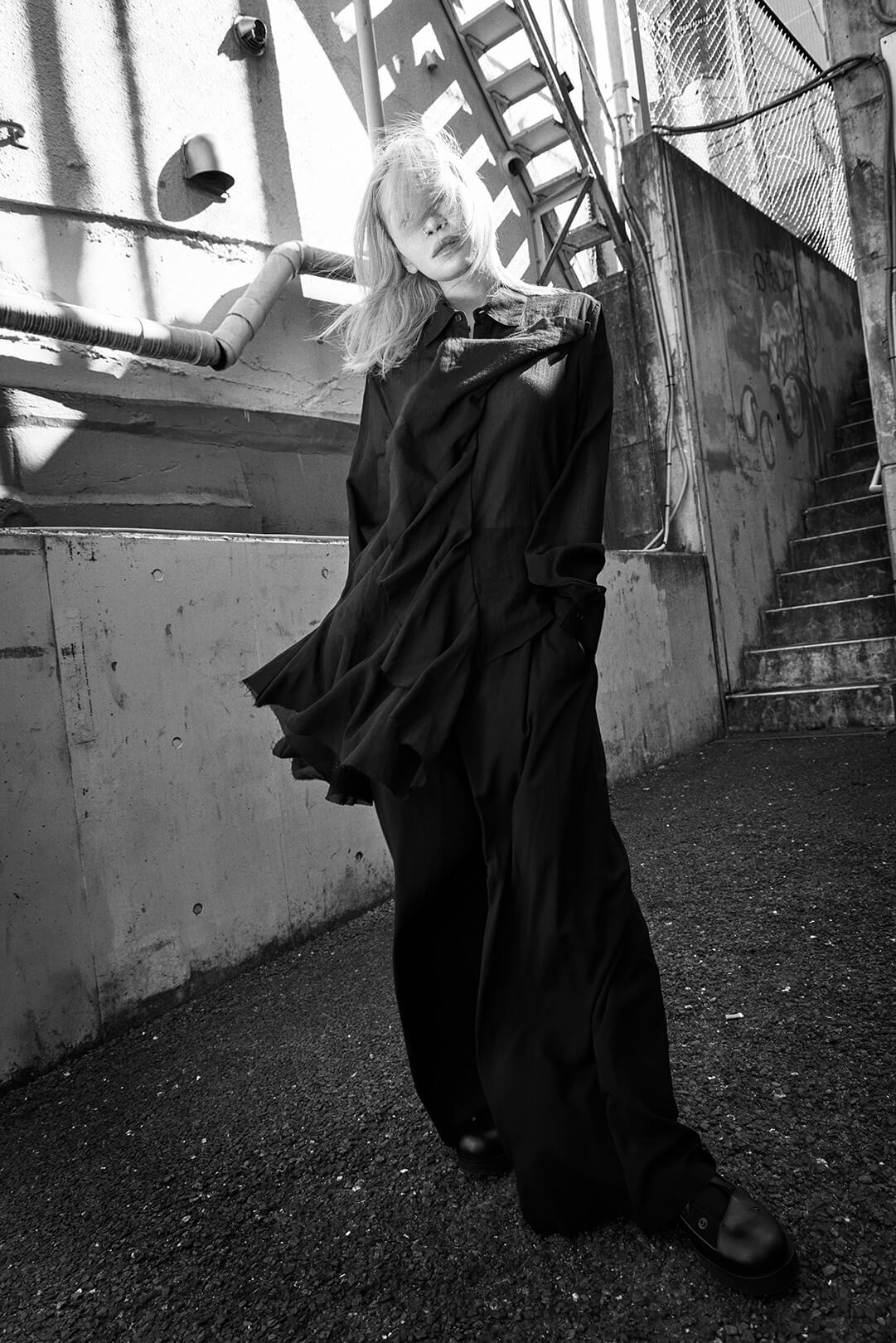 LIMI feu
LIMI feu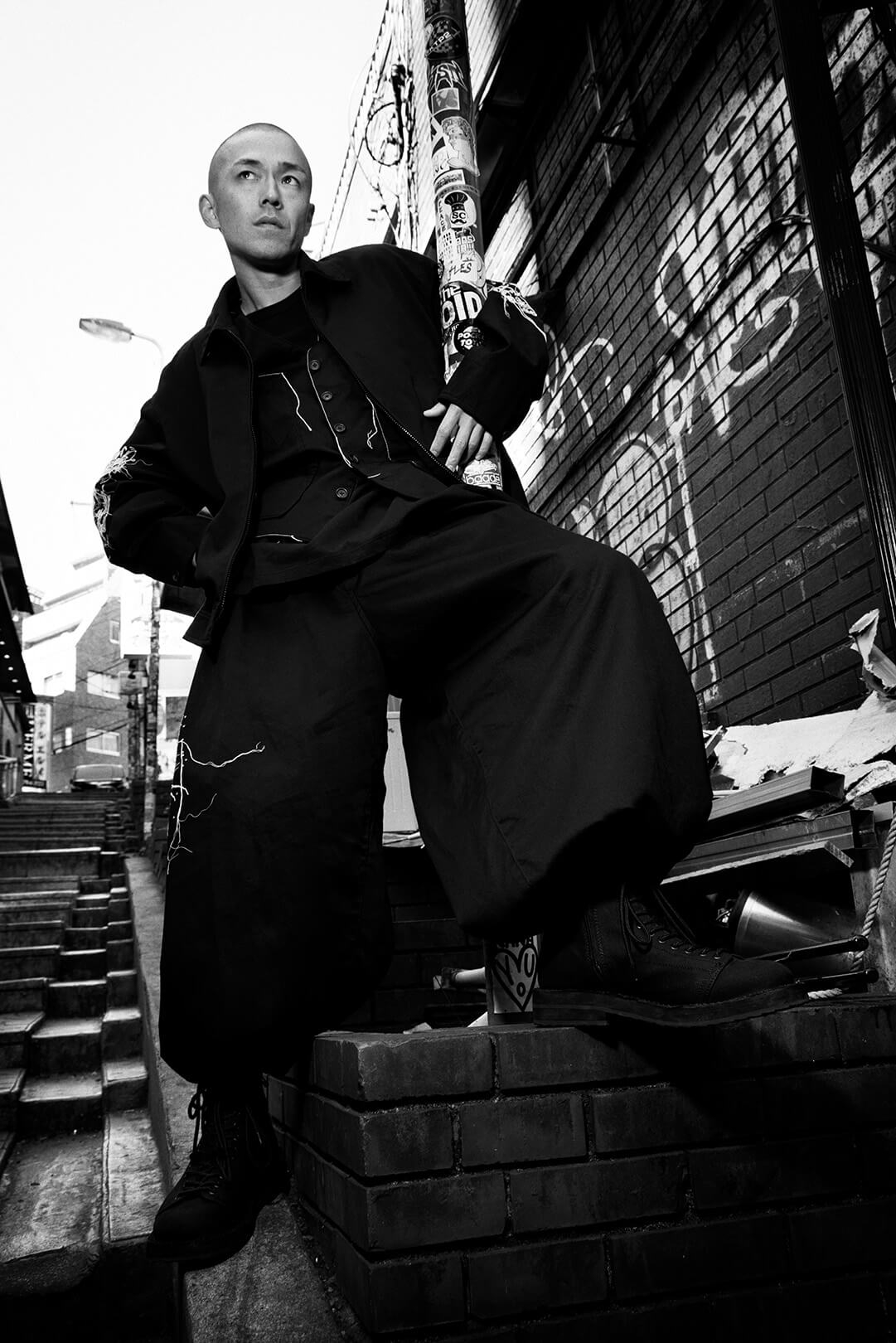 S’YTE
S’YTE時代從70年代過渡到80年代,戰敗國的日本復興,走上通往經濟大國、消費大國的道路。1973年,我的風格圖標是David Bowie,在澀谷開張的帕爾科,在80年代成為了一個匯集了設計師品牌的聖地。
山本耀司的收藏品與同時期世界出道的日本設計師品牌有著不同的審美意識。
也許可以說這與西歐傳承下來的服裝概念是相反的。
如果強調肉體和性元素,或者體現了動手所屬的“階級”的東西是西歐的福音,那麼
YOSHIYAMATO的母親是“包著身體”的母親。
但是,看起來不高聲調自我主張,卻散發出確實存在感的“自我”的衣服。
在那裡,海外記者和買家將日本風格的罷工主義和已故的品位第一…更重要的是找到了開始。
YOSHIYAMATO被評價為“和”的審美意識和“洋”的時裝融合。
雖然沒有裝飾性,但既簡單又無味的“搖搖晃晃”的衣服。或者說“陰影禮贊”的隱秘的官能性被察覺到了。
YOSHIYAMATO的衣服受到歐美演員和藝術家的喜愛,但在歐美不得不置身於西歐社交場合的立場,但對於不想穿蕎麥、連衣裙和燕尾服的客人層,他們特別是YOSHIYAMATO的美學產生了深刻的影響。威姆·文達斯和皮娜·鮑什不僅穿著喬治大和喬治大和喬治大和喬治,還將他作為表現者的靈魂注入了那裡。
甘迺迪·Jr的妻子、時尚領袖卡羅琳·貝塞特·甘迺迪(Carollin Beset Kennedy)。她簡單地穿著YOSHIYAMATO的樣子讓我印象深刻。可以說她是元祖奎特·奢侈品,但YOSHIYAMATO的衣服也屬於她的上下文。
不僅僅是YOSHIYAMATO,日本設計師的福並不是掩蓋或裝飾“人”,而是反而能從纏繞中表現出來的存在嗎?也就是說,這裡的福不是“東西”。我們目不轉睛地看著人把事物升華為‘超越事物的存在’的樣子。或者說福能使人的魅力(有時本人也不知道)視覺化。人雖然養大了母親,但也養大了母親。
親眼目睹這一幕並拍攝成影像的是攝影家。
As the era shifted from the 1970s to the 1980s, Japan, once a defeated nation, recovered and followed the path to become an economic and consumer superpower.In 1973, when my style icon was David Bowie, PARCO opened in Shibuya, and by the 1980s it had become a mecca for designer brands.
Yohji Yamamoto's collections, possessed a different aesthetic than other Japanese designers which debuted on the global stage around the same time.
One could say it stood in stark contrast to the fashion sensibilities inherited in the West.
If Western clothing was about emphasizing the body and sexuality, or manifesting the social class of the wearer,
Yohji Yamamoto's clothing was about "wrapping the body."
Clothing that, while not loudly asserting itself, exuded a firm presence and sense of self.
Foreign journalists, buyers—and above all, the wearers themselves—began to recognize in his garments a uniquely Japanese stoicism and sensuality.
Yohji Yamamoto was seen as a fusion of Japanese aesthetics and Western couture.
The clothes were not decorative, but had a certain "sway" to them that was neither simple nor bland. There was a hidden sensuality to them that was reminiscent of "In Praise of Shadows."
His garments, favored by Western actors and artists, resonated deeply with those who, though compelled to participate in Western social settings, did not wish to wear typical soiree dresses or tuxedos. Wim Wenders and Pina Bausch did not merely wear Yohji Yamamoto; they imbued the garments with their spirit as artists.
Also remembered is the late Carolyn Bessette-Kennedy, wife of John F. Kennedy Jr. and a noted fashion icon. Her simple, elegant way of wearing Yohji Yamamoto remains etched in memory. She could be considered the originator of "quiet luxury," and Yohji Yamamoto’s clothing certainly belongs within that context.
Not limited to Yohji Yamamoto alone, Japanese designer clothing may not be about hiding or adorning a person, but rather about expressing their essence through the act of wearing. That is to say, here, clothing is not simply a "thing." We have witnessed how people elevate garments into something more. At times, clothing can even make visible a person's appeal—something they themselves may not recognize.
People develop clothing, but clothing also develops people.
And it is the photographer who witnesses this and captures it in images.
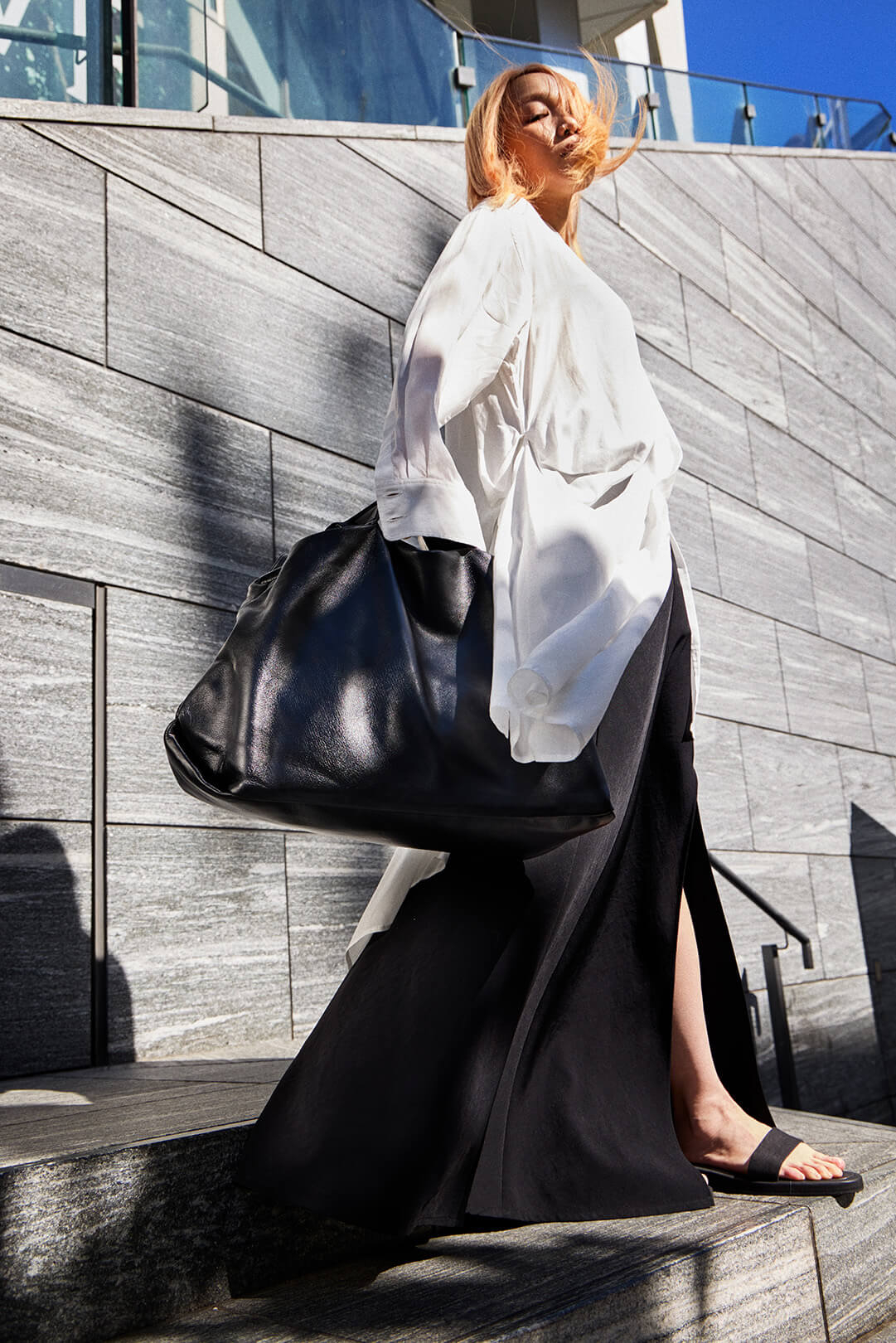 discord Yohji Yamamoto
discord Yohji Yamamoto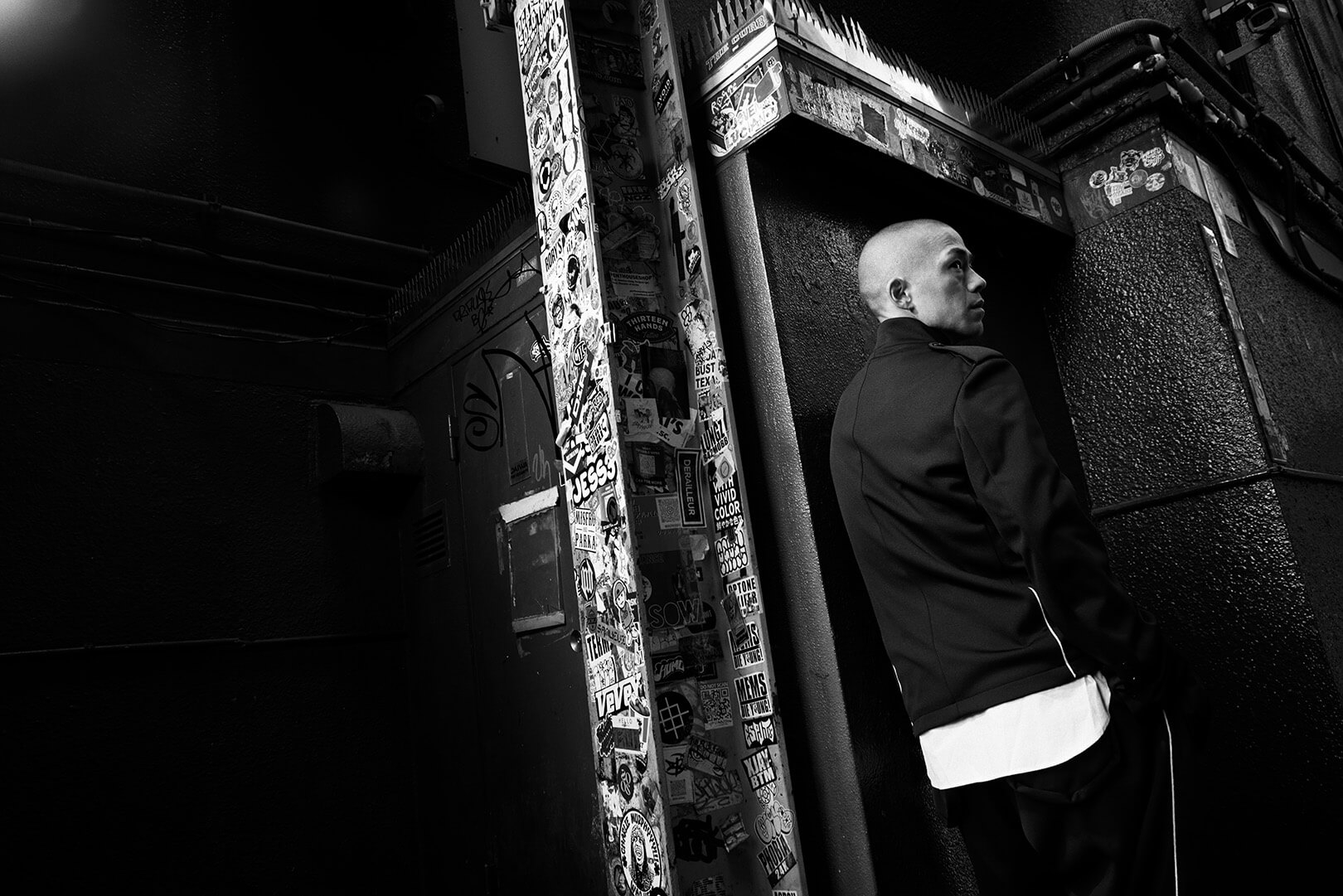 Ground Y
Ground Y